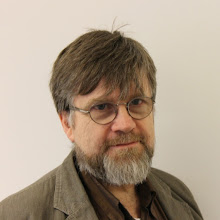I've got something of an affection for keys in general and have dabbled with making both straight keys and paddles (the latter just for fun) - but I've never tried electronic touch-sensitive paddles before. Having been touched by them (and vice versa) for the first time at Rishworth, I decided to make one...
I found a truly elegant design by Matthias Volkert, df4sq, in Sprat 48...

and - whilst I'm not interested in the keyer part of Matthias' beautiful, simple, efficient design (having the m0xpd PIC keyer and its Funky derivative), I decided to try the paddle section.
My version follows Matthias' words and music pretty closely, but with the addition of open collector outputs to connect to a keyer or a rig...

(eagle-eyed readers will see the power supply plug-in of a few weeks ago pressed into service)
The paddle was rough-hewn from PCB offcuts...

The whole thing worked very well indeed. I was keen to try it on air, but the bands were out of action last weekend due to a cacophany of QRM caused by something called CQ WW DX ("- . ... - / - . ... - / - . ... -" ad nauseam). [There is, of course, the possibility of shelter in the quiet haven of 30m during a storm of contesting - but that is occupied by my beacon!]
What's worse, I couldn't even go outside into the workshop to make a nicer paddle or a PCB for Matthias' circuit due to a spell of very cold weather! It would be nice to have been able to say "unseasonably cold weather" at that point - but extreme winters are becoming a habit.
Despite the frustrations of contesters, cold spells and failed attempts to build a switching bandpass filter, last weekend did have one high spot - and very high it was too...
A daughter had kindly given me tickets to see Sheffield's Versatile Singer/Songwriter in his "A Man with No More Rolls" tour at the DanceHouse...


















